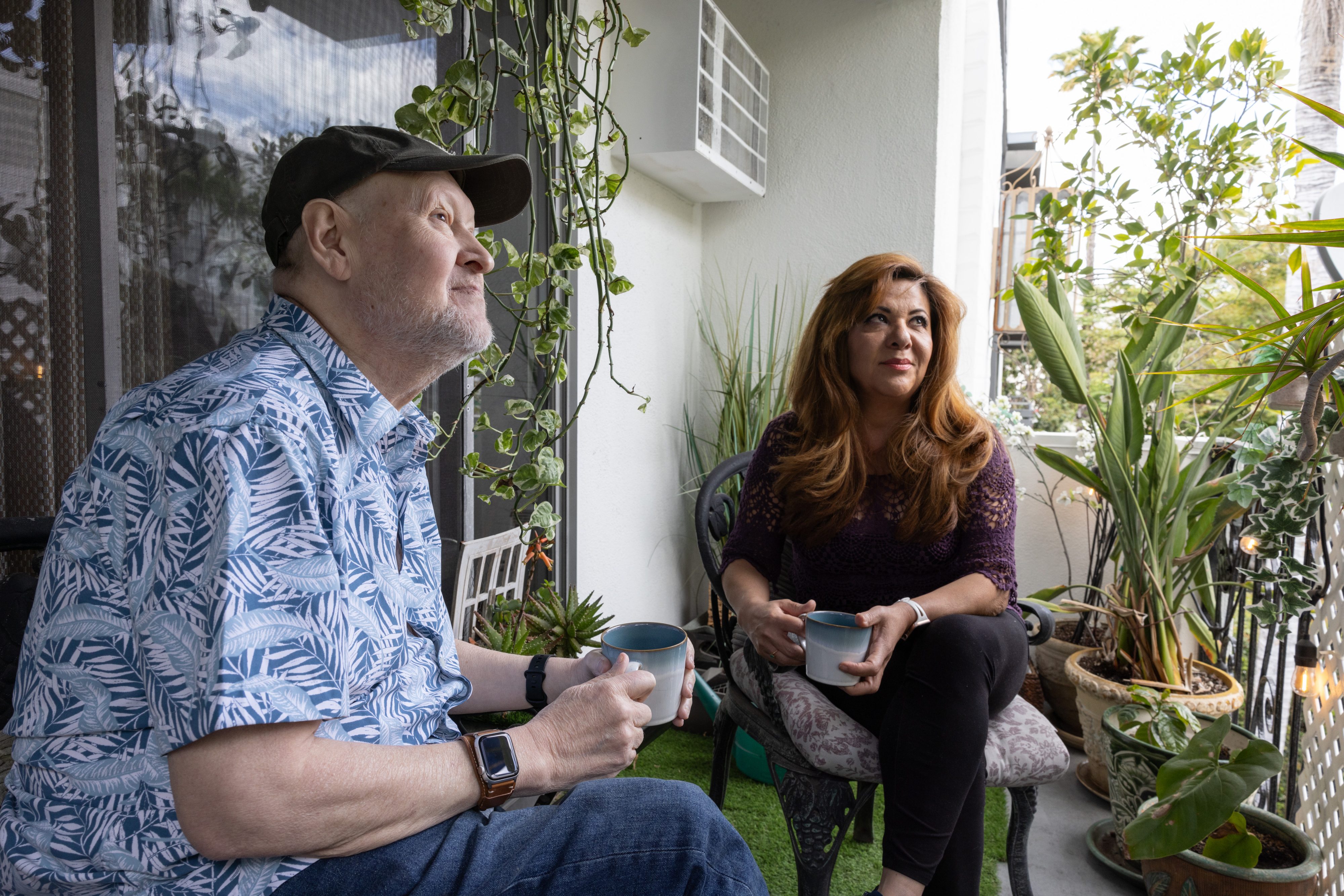Living with Neuroendocrine Cancer: Stephen’s story
It was only at 46 years old that Stephen was diagnosed with neuroendocrine cancer. Lovingly married to his wife and father to two sons freshly out of high school, in the prime of life with decades ahead of him, Stephen was shocked and confused by his diagnosis. His doctor told him he had 10 to 15 years left. He began asking himself would he get to grow old with his life partner, and would he get to see who his sons would become.
When Stephen was diagnosed, he had never heard of neuroendocrine cancer, and this is not surprising. Neuroendocrine cancer is rare, with 35 in every 100,000 people currently living with the disease globally.1 Diagnosing neuroendocrine cancer can be difficult, often taking years to be correctly diagnosed, giving the tumor time to spread.1 Stephen himself first started experiencing symptoms in 2011, but at the time nothing seemed amiss for his doctors; in the end, he was diagnosed 9 years later.
The delay in Stephen’s diagnosis is not unusual and this is why the neuroendocrine cancer community has chosen the zebra as an analogy for the community to relate to. Inspired by the saying “if you hear hoofbeats, think horses, not zebras”, alluding to the recommendation to consider the most obvious and common diagnosis, rather than a rarer disease. Just like zebras’ stripes, no tumors or neuroendocrine cancer patients are the same.
But Stephen is not alone in his journey. He can count on his family. Stephen jokes that his wife is more concerned about him than he is about himself. She has been his support, his listening ear, offering positivity and advice. Stephen also relies on the unwavering support of his sons, Logan and Gavin, both in their twenties. He describes Gavin as a sensitive boy, who immediately notices when his father is acting differently and having an off day.
Beyond his family, he can also count on the Canadian Neuroendocrine Society, in which he has found a community. There, Stephen has been able to ask questions, find answers on his diagnosis and treatment journey, get resources, and above all, listen to the stories of people who are living with neuroendocrine cancer. Through his blog and his latest role as a support group leader in his local area, he hopes to bring awareness and help people who have been newly diagnosed, helping them like others did for him.
Now, Stephen is looking forward. He has made plans to live part-time in a van with his wife, travelling and exploring as much as possible. Plus, he describes his happiest times on the water canoeing where he finds peace and heals the most. Surrounded by those he loves and cherishes, Stephen has decided not to stay burdened by his diagnosis, making the most out of life instead. In his own words, he is not dying of cancer, he is living with it.
About Neuroendocrine tumors NETs
Neuroendocrine tumors (NETs) are a group of uncommon tumors that develop in the cells of the neuroendocrine system throughout the body.3 NETs occur in both men and women, in general aged 50 to 60 years old, although they can affect anyone of any age4. The three areas where NETs are most commonly found in the body are the gastrointestinal tract, the pancreas and the lungs.5 The number of people newly diagnosed with NETs is believed to be rising due to increasing awareness and better methods of diagnosis, with approximately 35 in every 100,000 people currently living with NETs globally.1,2 The symptoms of NETs are often not distinct and difficult to identify, leading to delays in diagnosis, with almost a third of people taking at least 5 years to be diagnosed with NETs.1
/
References
- Singh et al. Patient-Reported Burden of a Neuroendocrine Tumor (NET) Diagnosis: Results From the First Global Survey of Patients With NETs. J Glob Oncol. 2017 Feb; 3(1): 43–53.
- Durma et al. Epidemiology of Neuroendocrine Neoplasms and Results of Their Treatment with [177Lu]Lu-DOTA-TATE or [177Lu]Lu-DOTA-TATE and [90Y]Y-DOTA-TATE—A Six-Year Experience in High-Reference Polish Neuroendocrine Neoplasm Center. Cancers 2023, 15(22), 5466; https://doi.org/10.3390/cancers15225466
- Neuroendocrine tumor (NET). https://www.cancer.gov/pediatric-adult-rare-tumor/rare-tumors/rare-endocrine-tumor/carcinoid-tumor. Accessed August 2024.
- Neuroendocrine tumors. https://my.clevelandclinic.org/health/diseases/22006-neuroendocrine-tumors-net. Accessed August 2024
- Jamal et al. Neuroendocrine tumor of the kidney. Diagnostic challenge and successful therapy. Urology Annals 11(4):p 435-438, Oct–Dec 2019. DOI: 10.4103/UA.UA_169_18











